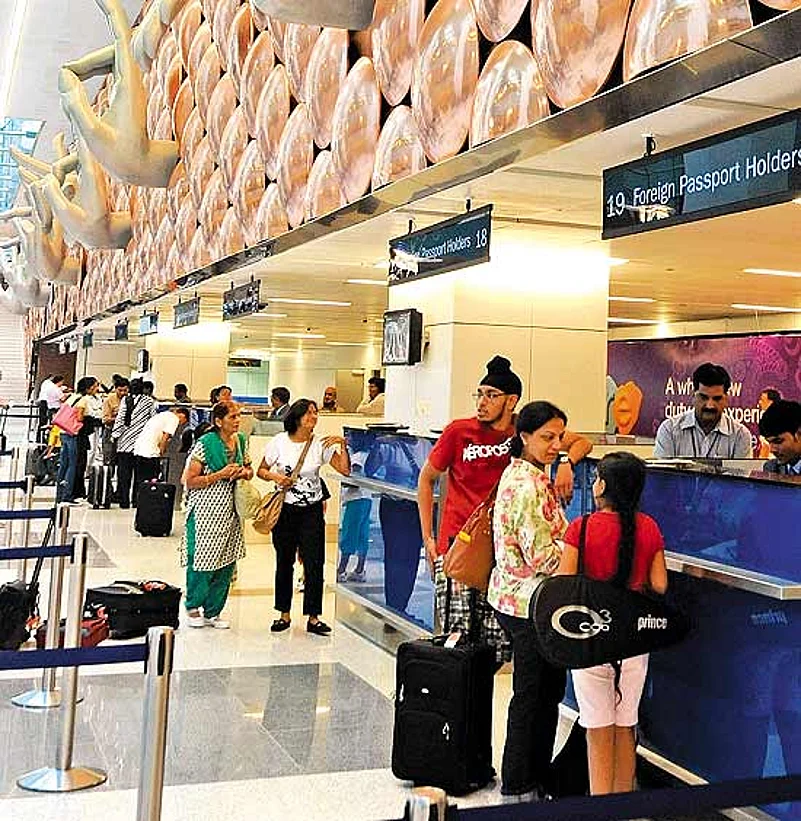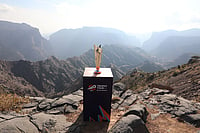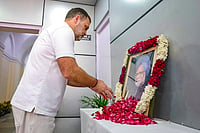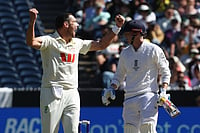An open, pluralistic and vibrant democracy that has a rich tapestry of diverse culture is the way officialdom commonly describes India to the outside world. Add to that phrases like an ‘attractive market’, ‘investment destination’ and a ‘growing knowledge pool’. Many foreigners would nod their head in agreement. But, increasingly, a new probability rears its head in the minds of many Indians and their friends from abroad—that such scraps of prideful positivity are turning into deceptive cliches. Much of the doubt stems from the visa regime India has put in place, a less-than welcoming system that has become tougher after the 26/11 Mumbai terror attacks and where security concerns are the prime driver.

“Simply put, a visa regime is a mechanism that facilitates visits of people from whom a country benefits, and keeps out those from whom it doesn’t,” says Ajit Doval, former intelligence bureau chief. Indian embassies and missions in different parts of the world maintain an informal ‘black book’ with names of people who they want to keep from visiting India. There is no denying that India has been a victim of cross-border terrorism for years, mainly emanating from Pakistani soil. It has always had a differential visa policy, not only in dealing with those from Pakistan or whose parents were originally from that country, but also with other people from its immediate neighbourhood. While Nepalese and Bhutanese nationals have free access to India, those from Bangladesh have had a much closer scrutiny and often a longer wait to get a visa to visit India.
Though norms have been relaxed for about 13 countries—mainly from South and Southeast Asia—whose citizens get a visa on arrival, nationals of most countries complain about the cumbersome and slow process they face when applying not only for a tourist visa but for also for other categories, like business, employment or research and journalist visas (see box with examples).
In the past few years, nearly 20 million tourists have visited India. Encouraged by the substantial revenue that India earns from their visits, the government now plans to take steps to double their number in the next couple of years. Yet, many rules, like the one that stops a person from returning to India before a gap of two months, acts as a spoiler for many tourists, keen as they are to combine the Indian visit with trips to some of our neighbouring countries. Many government officials argue that it is about time India scraps the two-month cooling-off period rule to allow foreigners greater flexibility in planning their tour programme to India and the neighbourhood. However, security parameters have overridden such arguments so far.
“A balance needs to be struck between our security concerns and maintaining India’s strength as an open, vibrant democracy,” says Kanwal Sibal, former foreign secretary. But security concerns have now started dogging every footstep of western visitors, especially after US citizen David Headley’s involvement in 26/11 was uncovered. As a result, complaints about India’s difficult visa regime are rising, as not only tourists but westerners living here for years get more and more concerned at the subtle effort to make them feel less welcome.

For forms’ sake The Foreigners’ Regional Registration Office in New Delhi. (Photograph by Tribhuvan Tiwari)
Some see in this a hint of the xenophobia that many Indians, and more so those in the establishment, suffer from. India’s history has been replete with examples of foreigners arriving as innocent traders, scholars or visitors, who nevertheless ended up as colonisers or exploiters. Citing examples of some ngos and individuals who come to the country as visitors but end up espousing causes that foment trouble for the government, officials defend some of the tough measures.
“Millions are given visas to come to India every year under various categories but only a handful of those who get rejected are highlighted,” says G.K. Pillai, former home secretary. He argues that across the world, including in most western democracies, there prevail visa regimes whose primary objective is to ensure security. He argues that anyone who does not have an adverse report against him is given a visa. “Only odd cases, and that too with foreigners who are well-connected, get noticed,” says Pillai.
But that kind of argument can cut both ways. Maybe only a handful are denied visas or have problems with the existing regime. But it could also be that we do not get to know of many cases since they are not “well-connected”.
But the open, though unacknowledged, bogey has always been Pakistan. Much of the strict visa regime India has put in place over the years primarily sprung from the need to minimise security threats from the neighbour. Now that steps have been taken to ease many of the visa restrictions with even Pakistan, can it be the dawn of a new openness vis-a-vis the rest of the world too? Or will it peter away quietly, as many ambitious overtures between the two have in the past? While we wait for clarity on that, there’s no doubt that many innocent visitors to India will have to put up with the special ordeals that seem to come with 21st century foreign travel.

“More Contacts Between People”
The minister for external affairs explains the official position
What is the significance of the new Indo-Pak visa regime?
People are at the heart of the Indo-Pak relationship. Enhancing people-to-people contacts is the way forward in building a relationship of trust and mutually beneficial cooperation. The new liberalised visa regime introduces a number of measures aimed at easing travel of business persons, tourists, pilgrims, elderly and children, thereby facilitating contacts between the people of the two countries.
Will this be replicated with other neighbouring countries?
The high commission in Colombo issued visas to nearly 2,00,000 Sri Lankan nationals to visit India last year. Similarly, a total of about 5,00,000 visas were granted by our mission and posts to Bangladeshi nationals last year. With Nepal and Bhutan we have a visa-free regime which facilitates free movement of people. As you are aware, we have an open border with Nepal. Encouraging contacts between the people of the subcontinent is central to our vision of working towards South Asian integration.
The Vice Grip Of A Visa
Many expatriates dread their visa-related visits to the FRRO and the MHA. They speak of an experience that’s harrowing, tiresome and incomprehensible in equal measure.
A Dutch Businessman: He runs a small enterprise, and narrates his harassment at the hands of the Foreigners’ Regional Registration Office (FRRO) for his visa renewal. “First, I was given a three-month extension during which they tried to complete police verification and other formalities. Only after that was I given an extension for the remaining nine months of the year.” He rues the “wasteful hours”, and the uncertainty he had to endure.
A West European company executive: The problem arose after he completed his five-year stay. An employment visa is given to a person for a period of five years. But there is no clarity on what happens after that. “He was asked to return home after his visa expired and made to apply afresh,” says a friend of his. Then, the official at the counter at the Indian embassy refused to give him a visa. When asked why, the official replied, “You should have trained an Indian to take your place in those five years.”
A national of a Scandinavian nation: Complains about the difficulty of returning to India to work. “Earlier, it took only a few days to get the visa renewed. But recently, I got a call only after a few weeks. At the interview, I was told that the document that I had submitted, showing my income in India (it has to be at least $25,000 a year), fell below the requirement.... A visa was given after I gave fresh documents showing my income was above the mark. But I feel they were doing it deliberately to delay things.”
A French national: “The amount of paperwork involved in getting a visa extended is not funny.” He tried getting a business visa, but soon learnt it was easier to have an employment visa. “The official at the FRRO asked for 35 different forms, four copies each—it came to more than 140 copies! It took me nearly a week. Then I had to wait for a month. But I was given only a three-month extension. After two months, now that I have applied for another extension, I got another three-month extension. I don’t know if only French nationals are being targeted....”
Another French national: “You always had to go in two steps, the FRRO and then to the home ministry, to get your visa extended. If you were lucky, after hours of waiting, you would be given a letter from the FRRO and then you would have to come to the mha (ministry of home affairs) to get their approval. My experience with the ministry was among the most harrowing I’ve had with Indian administration.”
A Nordic scholar: “They are very restrictive in giving visa to a researcher. If one is lucky, one gets it after waiting for three months. But without a long-term visa with multiple entries, it’s problematic because after every few months, or at times weeks, one has to return home to attend other teaching commitments.” His other problem: “As I was working with rare documents and files, the local police had no clue of my work. But they made up for it by making things difficult. Every day when I returned, I found the file I was working on missing.”
A member of a leading Delhi think-tank: A regional security workshop was organised where foreign scholars were invited. “But a leading Chinese scholar of a reputed Beijing institution couldn’t attend; he wasn’t given a visa.... I wonder what kind of a security threat he could have posed...I learnt a few days later that a Chinese mathematician was not given a visa either. Maybe his mathematical calculations could have posed a grave danger for the Indian security establishment!”

























